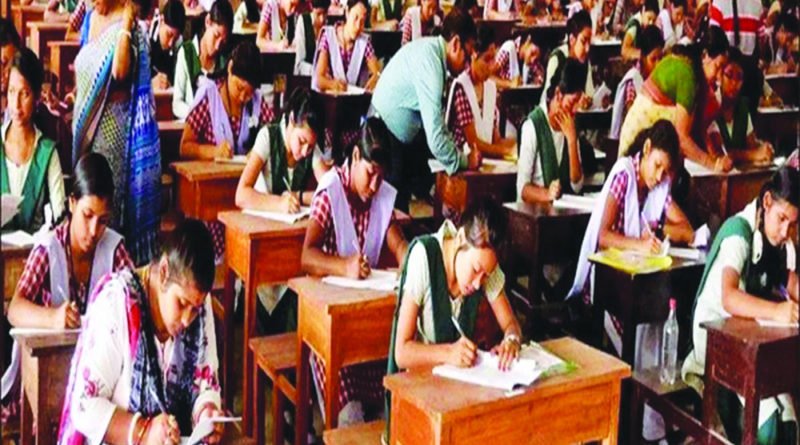NEP: Promise or platitude?
Without increasing public investment, neither the infrastructure, nor the standards required for the New Education Policy 2020 can be achieved
There have been plenty of debates and discourses about the New Education Policy 2020 (NEP) but not many focussed on its implementation. No doubt, the NEP is the most progressive and futuristic document and if implemented with sincerity in letter and spirit, it has a tectonic potential to transform India from an educationally laggard nation into a knowledge superpower. Indeed we have never had any education system, only a system of examinations and that, too, an inefficient one, based on rote learning that kills all creativity and innovation. The NEP aspires to transform this moribund system by aiming to produce “good, thoughtful, well-rounded, and creative individuals,” who are needed to transform the 21st century India. But it has failed to provide a specific implementation roadmap, except specifying some broad targets.
Neither has it prescribed any accountability mechanism for its implementation. But most importantly, any great idea like this needs great finances. Education being a concurrent subject, both the Centre and the States need to share the responsibility for its implementation as well as finances. But the NEP has almost skirted the issue altogether.
The higher education in the country has seen phenomenal growth during the last two decades. The number of colleges, universities and students has quadrupled since 2001, and the private sector has grown much faster than the public institutions. Today, we have 993 universities, about 40,000 colleges and 10,000 standalone institutions, and nearly four crore students. But unfortunately, most of these institutions produce unemployable graduates and postgraduates annually, with very little knowledge and skill.
If we can forget for a moment our current military standoff with China, a comparison with that country might be instructive in many respects. In India Unlimited: Reclaiming the Lost Glory, Arvind Panagariya has provided some tale-tell statistics about China and India. Based on the Scopus database of articles published and cited in international journals, the National Science Foundation of US brings out annual rankings of different countries. In 1996, in almost all subject areas, China and India were ranked more or less evenly. In fact, India was a tad better. In terms of the total citations, India was ranked 19th amongst all countries, while China was ranked 21st. In social sciences, India was ranked 21st against China’s 24th, in chemistry and molecular sciences, India was ranked 11th and in physics 17th against China’s 13th in both. But by 2017, China moved far ahead of us in all subjects — third in terms of total citations against India’s 14th. In social sciences, chemistry and physics, China ranked fifth, first and second while India lagged way behind with 14th, fifth and eighth ranks respectively in these subjects. In the Times Higher Education Ranking 2020, China has three universities among the top 100 of the world, four in the next 100 and altogether 72 among the top 1,000. India has none among the first 200 and 36 among the top 1,000, half of China’s 72.
How could China race so much ahead of us in just two decades? Actually, it had started its economic liberalisation in 1976, a good 15 years ahead of us. But it started reforming the education system in 1995, 25 years ahead of us. It realised that to become a great power and a great nation, the primary need is to have a good system of education.
What is a good system of education? If we take the US as the model, we would appreciate that a good system of education needs basically two things: adequate funding and decentralised governance with a very high degree of autonomy to the institutions. The US universities have complete autonomy in deciding admission, courses and faculty and they compete amongst themselves to attract the best faculty, students and research endowment funds. They function independent of federal and State Government regulations with practically no interference by the State.
We had inherited a colonial legacy of higher education where universities were primarily tasked with granting degrees with very little focus on research, and by and large, we still remain the same. China has modelled its system of education in the Soviet-style after 1949 but Mao Zedong’s Cultural Revolution nearly did it in. Then in 1995, as Panagariya informs, it launched the so-called Project 211 with the slogan: “For the 21st century, manage the top 100 universities successfully.” In 1998, it passed the Higher Education Law, which liberalised and decentralised its higher education just like the US, with academic and administrative freedom given to higher educational institutions (HEIs). That law recognised the need for ensuring adequate funding and allowed tuition fees to be hiked by the universities, with State subsidies for those who couldn’t afford it. So the tuition fees rose steeply from ¥600 in 1992 to ¥10,000 by mid-2010. The Project 211 funded $4.6 billion (30 per cent on infrastructure) to 107 universities between 1995 and 2005. In 1998, China launched another project — Project 985 — to create world-class universities out of the 107 universities selected for Project 211. Under this, the top two universities (Peking and Tsinghua) received $240 million for three years. By 2007, the project had covered 39 universities. Of these, 27 are now ranked within the top 600 universities of the world.
The NEP has correctly identified many of the problems that beset our higher education system — like a severely fragmented ecosystem characterised by a rigid separation of disciplines with little emphasis on cognitive skills, learning outcomes or quality research, limited institutional autonomy, poor leadership and ineffective regulatory and governance systems. The result is that the Gross Enrolment Ratio in higher education is a paltry 26 per cent compared to 58 per cent in Senior Secondary and 79 per cent in Secondary schooling. The NEP promises to correct this by focussing on multi-disciplinarity, flexibility, emphasis on skill acquisition and quality research. To fix the problems, it prescribes that there would no more be any rigid separation between arts and sciences, curricular and extra-curricular activities, or vocational and academic streams. Students will select subjects of their choosing across all streams to excel wherever they can and discover their aptitude and potential. For this, it prescribes a roadmap of credit-based undergraduate degree courses with multiple exit options.
It has also suggested a new institutional framework comprising a new overarching body — the Higher Education Commission of India — with four verticals for regulation, accreditation, funding and learning outcomes, which will end the multiple conflicts of interest that bedevil our current regulatory system. Research gets the maximum emphasis with a National Research Foundation to “seed, grow and facilitate research” in academic institutions. Most importantly, the NEP recognises that the HEIs need to be depoliticised and educationists appointed on their Board of Governance instead of bureaucrats. But given the present stranglehold of retired bureaucrats and politicians over the HEIs and their stubborn objections to any reform, it would be difficult to end their dominance over our higher education anytime soon.
The most revolutionary part of the NEP is perhaps its single-minded focus on multi-disciplinarity by creating large universities and HEI clusters and ending the present system of affiliated colleges. But such a major shift would also need enormous resources, and it is here that the NEP disappoints. The total combined public expenditure on education by the Centre and the States, currently at only about four per cent of GDP, falls way behind the target of six per cent envisaged in all our previous education policies. Consequently, our expenditure on research remains a pathetic 0.69 per cent of GDP. Without investment, neither the infrastructure nor the standards required for the NEP would be achieved.
The NEP only paid some lip-service to this crucial element — by hoping that the Centre and the States will work together to raise expenditure to six per cent of GDP which it recognises as essential for “progress and growth.” But it stops short of recommending that a law should be enacted to enforce the same. Thus, there is neither any commitment nor an accountability structure built into the NEP to ensure implementation. Maybe the committee had felt restrained by pandemic-related budgetary stress. This would be over some day but the future will not wait.
Meanwhile, universities can think of going beyond operating from their individual silos. They can form provincial and regional consortiums for better synergy. By mapping their educational resources and sharing these among themselves, they can together provide students access to the best facilities. Each institution can expand capacity in its strength area to optimise investment and specialisation and share this through a network of institutions. The mantra should be to give access to quality learning to all who desire to learn.
(The writer is former Director-General from the Office of the Comptroller & Auditor General of India and an academic)
Source: The Pioneer




